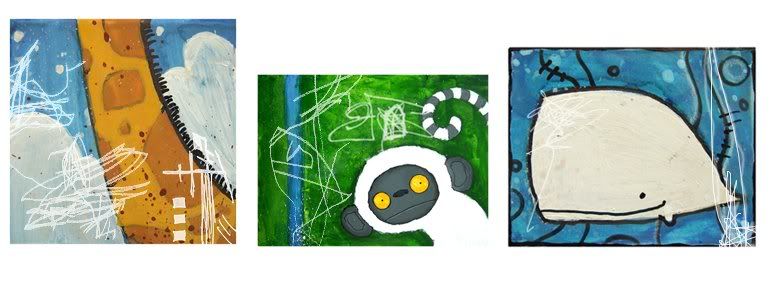Greetings, readers! The following post comes to us from Alderson Warm-Fork of Directionless Bones, who will also be blogging here on occasion. Someday I will figure out how to create different users for this account so my introduction won't be necessary, but I must also someday figure out how to get a decent tax return, make my own jewelry and engage in urban foraging without poisoning myself. Thus, I hope no one is holding their breath when I say I will "someday" do something.
PETA and Objectification
One of the main claims urged against PETA is that their numerous sexual images of women constitute ‘objectification’, which is bad. In this post I want to explain this idea as clearly as possible.
‘Object’ has a lot of meanings – vernacular, grammatical, philosophical. In broad terms it can be used relatively as ‘the object of my attention’, ‘the object of my desire’, etc. to mean that thing which a certain action is targeted towards. It can correspondingly be used absolutely, as ‘an object’ full stop, to mean the sort of thing which in general has things done to it, rather than doing things.
‘Objectification’ then means a pattern of words or images of whatever that emphasises and prioritises the things that are done to something over the things that it does. This has an important relationship with two other ideas: personhood and hate speech.
Personhood is related because although clearly persons are objects, in that they can be seen, felt, thought of, and acted upon, what is distinctive about persons is a certain sort of activity. Perceiving, thinking, reasoning, understanding, deciding, desiring, aiming, etc. are the distinctive activities of persons, and it is these activities, not any perceptible difference, that identifies persons (persons don’t, for example, feel different to the touch from non-persons).
So one consequence of objectification is that what is objectified is de-personalised; its personhood is devalued relative to what persons can do to it.
Hate speech is another phrase with often unclear meanings, but I present it in a certain sense – as speech which legitimises violence, which presents a class of beings as by nature fit targets for violence. This is clearly a species of objectification – indeed all objectification will have a certain tinge of ‘hate speech’ because to be acted on, to be used like an object, is typically a violent experience.
So how does this relate to animals? Food animals are supremely objectified. The single most accurate way to sum up the way they are treated is – they are treated as objects. They are resources, property, things. Even animals which are spoken about hatefully as, for example, ‘beasts’, as dangerous and threatening and hence deserving extermination, are presented as having more agency and activity than the broiler chicken, which is in a sense merely a KFC bargain bucket on legs.
And the ‘hate speech’ component of objectification comes through here very clearly. Nobody literally ‘hates’ broiler chickens – nobody thinks ‘yeah, those fucking chickens are going to get it now!’. But the objectification, the seeing them simply as resources for human use, justifies and legitimates the single most extensive and large-scale systematic act of violence on earth – the killing of billions of chickens every year. Objectification legitimises violence.
How does this relate to PETA adverts showing nude or effectively-nude women? This trend, this societal obsession with the naked female form, fits the definition of objectification because it “emphasises and prioritises” the things that can be done to that form – things ranging from ‘desiring’, ‘fantasising about’, to ‘touching’ and ‘having sex with’. Even the action of ‘seeing’ is emphasised – the whole point is not just what this woman looks like but that she is showing herself. No individual image need carry such an emphasis – the pattern of endless repetition clearly does so.
And as with animals, objectification is linked with violence. If the principal feature of women is their suitability to be acted upon, to be seen and desired and touched and had sex with, then their other traits (such as the ability to choose, to make rational decisions) are obscured, and actions, such as rape or harassment, which conform to that ‘essential nature’ (sexual object) while conflicting with the secondary trait (rational chooser) make a lot more sense. Indeed, if a woman’s essence is to be desired, then any action which displays desire, from wolf-whistling to badgering her into unwanted sex, can be seen as a ‘compliment’, a benevolent act.
Female humans are not killed on the same scale as chickens. But the fact that so many of them experience sexual violence, the fact that historically most sex has been non-consensual (since marriage was seen as making consent irrelevant), the ratio of women killed by men who claim to love them compared to men killed by women, constitute a no less serious crisis.
Empirical arguments about causal links need not be central: if we can recognise objectification of chickens as a component of the complex of ideas which support ongoing violence against them, then we should recognise that same taint in objectification of women. Organisations which try to oppose one system should not do so by participating in the other.
Cross-posted at Directionless BonesLabels: animal rights, feminism, hate speech, intersectionality, objectification, personhood, violence, women |

Glad to see this. I just came across this blog through a Shameless Self-Promotion Sunday link on Feministe. As a fellow vegan who despises PETA you have my rapt attention and gratitude!